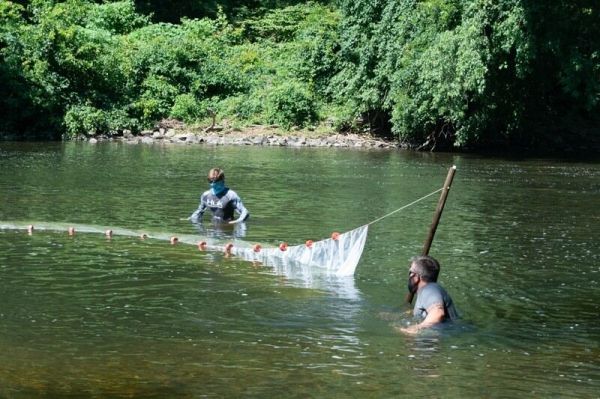Delaware Sea Grant’s Ed Hale has been conducting seine net surveys of Wilmington’s Brandywine Creek every two weeks since mid-July, engaged by a coalition of groups supporting the removal of the waterway’s dams up to the Pennsylvania border.
The main non-profit spearheading the work, Brandywine Shad 2020, wants to restore the creek as spawning habitat for the American Shad (Alosa sapidissima), which is an anadromous fish, meaning it lives much of its life in the ocean but returns to freshwater habitat to spawn. Juvenile shad grow in the rivers and creeks from Florida to Nova Scotia before heading out to sea, protected from marine predators when they are at their most vulnerable.
For centuries, the 11 dams between the creek’s confluence with the Christina River and the Pennsylvania state line have effectively confined any shad to the small section of creek below West Street, where the first dam blocked passage upriver. In 2018, riverine residents Hunter Lott and Jim Shanahan of Wilmington established Brandywine Shad 2020 to try to change that.
Jerry Kauffman is the director of the University of Delaware’s Water Resources Center and one of the driving forces behind the initial research for Brandywine Shad 2020 showing what would be possible in a dam removal project. He said it makes sense that opening up new sections of the creek would provide more habitat and eventually lead to larger populations of shad.
Continue reading at University of Delaware.
Image via University of Delaware.


